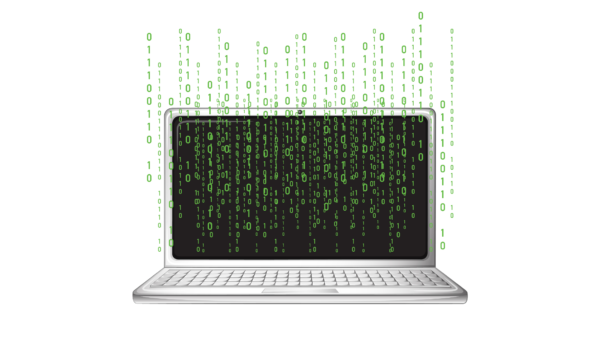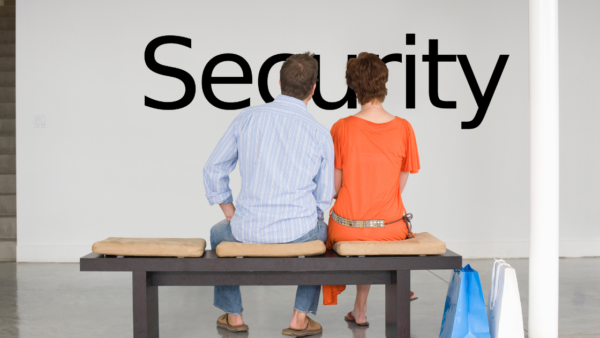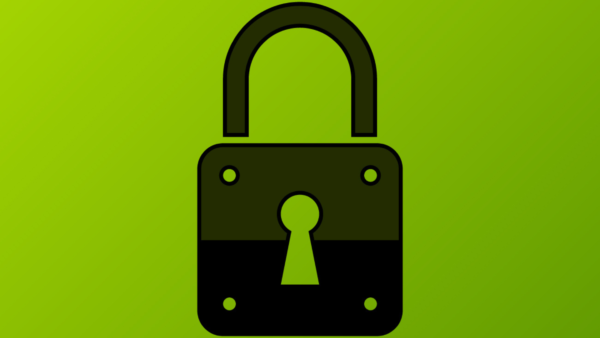The IT sector has seen a trend in recent years toward replacing less safe cryptographic algorithms like SHA-1 with more secure ones like SHA-2. This blog post will examine in detail why upgrading your Private PKI to SHA-2 is not only important but also crucial, with a focus on the impending deprecation of SHA-1 and older operating systems.
Understanding Cryptographic Hash Functions

What Are Cryptographic Hash Functions?
Cryptographic hash functions, like other hash functions, take an input—or ‘message’—and return a fixed-size string of bytes. The output string is generally referred to as the hash or ‘digest’. They are designed to be a one-way function, i.e., once data has been transformed into a digest, it cannot be reversed or decrypted to get the original input.
The magic of hash functions is in their consistency and uniqueness. The same input will always produce the same hash, and even a small change in the input will generate a vastly different hash. This feature makes them useful in various applications, such as data integrity checks, password storage, and digital signatures.
The Role of Hash Functions in PKI
In the context of Public Key Infrastructure (PKI), hash functions serve a pivotal role. The hash functions are used in the creation of digital signatures, a fundamental component of PKI. When a digital signature is created, the original data is passed through a hash function, and the resulting hash is encrypted using a private key.
The receiver of the data can then use the sender’s public key to decrypt the hash and pass the same data through the hash function. If the calculated hash matches the decrypted hash, the data’s integrity is verified—it hasn’t been tampered with during transmission. This process forms the basis of trust in digital communication, enabling secure e-commerce, digital signing of documents, and encrypted email services.
Hash Algorithms: SHA-1 and SHA-2
The Secure Hash Algorithms, developed by the NSA and published by NIST, are a family of cryptographic hash functions, with SHA-1 and SHA-2 being members of this family. Both SHA-1 and SHA-2 serve the same basic purpose—ensuring data integrity. However, their effectiveness and security vary significantly, hence the need for migration from the former to the latter.
In the next sections, we will explore the reasons behind the deprecation of SHA-1, the advantages of SHA-2, and why migrating to SHA-2 for your Private PKI is essential.
The Downfall of SHA-1

Since its inception, Secure Hash Algorithm 1 (SHA-1) served as a cornerstone for data integrity in the digital landscape. It was widely adopted across various applications, from digital certificates to software distribution. However, as technology evolved, so did our understanding of its security limitations.
Vulnerabilities in SHA-1
The first major blow to SHA-1 came in 2005 when cryptanalysts introduced the concept of “collision attacks.” A collision occurs when two different inputs produce the same hash output, effectively breaking the hash function’s primary rule of uniqueness.
While this was only a theoretical vulnerability initially, it materialized into a practical concern in 2017. Google’s research team demonstrated the first successful collision attack against SHA-1, known as the SHAttered attack. They produced two different PDF files with the same SHA-1 hash but different content, proving that SHA-1 was no longer collision-resistant.
Impact on Trust and Compatibility
This discovery had profound implications on the security and trust of systems relying on SHA-1. If malevolent actors could produce a malicious file with the same SHA-1 hash as a benign file, they could substitute the benign file with the malicious one without detection. This could potentially lead to widespread security breaches and loss of data integrity.
On the compatibility front, major technology players like Google, Mozilla, and Microsoft started phasing out support for SHA-1 in their browsers. Websites using SSL certificates signed with SHA-1 began receiving security warnings, leading to potential loss of traffic and trust.
The Inevitable Deprecation
In light of these security vulnerabilities and lack of support from industry giants, the deprecation of SHA-1 became an inevitable conclusion. Despite the initial reluctance due to the significant number of systems relying on SHA-1, the migration towards more secure alternatives has gained momentum over the years.
This shift to SHA-2 isn’t just a response to SHA-1’s weaknesses. It’s a reflection of the evolving landscape of digital security, which constantly requires us to stay a step ahead of potential threats. Let’s now delve into SHA-2, its strengths, and why it’s the chosen successor of SHA-1.
The Emergence of SHA-2
SHA-2 (Secure Hash Algorithm 2) is the successor to SHA-1 and has become the new standard for cryptographic hash functions. Despite sharing a similar mathematical basis with SHA-1, SHA-2 brings significant variations to the table and, most importantly, rectifies the security issues inherent to its predecessor.
The Strength of SHA-2
SHA-2 is actually a family of six distinct hash functions: SHA-224, SHA-256, SHA-384, SHA-512, SHA-512/224, and SHA-512/256. The numbers represent the length of the hash digest produced by the function. Longer digests generally offer more security, but at the cost of computational resources.
SHA-2 remains robust against known forms of attacks, including collision and preimage attacks. It has been tested thoroughly and is recognized as a trusted algorithm by the cryptographic community. It is not only safe from the vulnerabilities that brought down SHA-1 but also has been optimized for higher security and performance.
Adoption and Support for SHA-2
Given the vulnerabilities of SHA-1, many browsers, applications, and systems have either already migrated to SHA-2 or are in the process of doing so. In fact, most modern systems and applications have already ceased accepting SHA-1 certificates and signatures.
Major certificate authorities have also ceased issuing SHA-1 certificates, while tech giants like Google, Microsoft, and Mozilla have deprecated SHA-1 in their products. Therefore, continuing to use SHA-1 is not only a security risk but also raises the potential for compatibility issues.
Compliance Requirements
From a regulatory standpoint, shifting to SHA-2 is becoming increasingly crucial. Many industries, especially those dealing with sensitive information, have strict data protection requirements. For instance, the Payment Card Industry Data Security Standard (PCI DSS) and certain healthcare-related regulations now mandate the use of SHA-2.
In the following section, we’ll delve into the process of migrating from SHA-1 to SHA-2, its benefits, and considerations. We’ll also discuss strategies to ensure smooth migration with minimal disruptions.
Migrating to SHA-2: Why and How
With the downfall of SHA-1 and the emergence of SHA-2, the migration from SHA-1 to SHA-2 has become a necessity for businesses and individuals relying on Public Key Infrastructure (PKI). This transition isn’t just about maintaining data integrity; it’s about preserving trust, ensuring compatibility, and meeting regulatory standards.
Why Migrate to SHA-2
The first and foremost reason to migrate to SHA-2 is to ensure the security and integrity of your data. With SHA-1’s vulnerabilities exposed and exploited, continuing to rely on it opens potential risks for data breaches and loss of data integrity.
The second reason is compatibility. As mentioned earlier, tech giants and industry regulators have either already deprecated SHA-1 or are in the process of doing so. Continuing to use SHA-1 could lead to compatibility issues and eventual obsolescence.
Thirdly, and equally important, migrating to SHA-2 shows your stakeholders that you prioritize their security and trust. In an era where data breaches are prevalent, demonstrating your commitment to data protection can significantly bolster your reputation.
How to Migrate to SHA-2
Migrating from SHA-1 to SHA-2 isn’t typically complex, but it does require planning and care. The following steps provide a basic outline of this process:
-
Inventory: Start by identifying all your systems and applications that use SHA-1. This may include SSL/TLS certificates, email servers, VPNs, or any other systems that use PKI.
-
Plan: Develop a plan for each application or system identified. This should include timelines, potential risks, and mitigation strategies. Consider potential compatibility issues with older systems and how you’ll address them.
-
Update/Replace: Update your SHA-1 certificates to SHA-2. If an update isn’t possible, you may need to replace the certificate. Be sure to test the new certificate to ensure it works as expected.
-
Monitor: After the migration, monitor your systems to ensure they’re working as expected. Be ready to address any unexpected issues or complications.
-
Communicate: Keep your stakeholders informed about the migration process. This includes not just your IT team, but also employees, partners, and customers who may be affected.
In the next section, we’ll look at future considerations and the importance of staying informed about advancements in the field of cryptographic hash functions.
Planning for the Future

While migrating to SHA-2 is a step in the right direction, it’s crucial to understand that it’s part of an ongoing journey. In the fast-paced world of cybersecurity, remaining vigilant and adaptable is paramount to maintaining robust security practices.
The Landscape Beyond SHA-2
SHA-2, as secure as it may be now, is not the end of the line. In fact, NIST has already introduced SHA-3, a new member of the Secure Hash Algorithm family, which may take precedence in the future. Moreover, the evolution of quantum computing could potentially pose new challenges to our current cryptographic standards, requiring further advancements in our cryptographic algorithms.
Continual Monitoring and Updating
Staying on top of these developments is crucial. Regularly monitor and update your systems to ensure they remain secure against new threats. This goes beyond simply updating your cryptographic hash functions. It also includes patching your systems, educating your users, and fostering a security-first culture within your organization.
Risk Assessment and Management
Furthermore, a proactive approach to risk assessment and management can go a long way in preventing security breaches. Regularly assess your digital infrastructure for vulnerabilities and develop contingency plans to mitigate potential risks. As part of this, consider implementing a robust incident response plan to swiftly and effectively address any security incidents that do occur.
Building a Culture of Security
Finally, building a culture of security within your organization is key. This involves regular training for your staff, fostering awareness about potential threats, and developing security-first processes and practices. Remember, cybersecurity isn’t just a technical challenge; it’s also a human one.
Final Thoughts
Switching your Private PKI to SHA-2 is a key move. It helps to keep your online data safe and build trust. But this is only a part of staying safe online, as technology keeps changing.
This can seem complicated, but we at SSL.com can help make it simpler. We can guide you on how to use SHA-2 and help improve your online safety.
Everyone has different needs and we at SSL.com offer tailored advice just for you. This way, you’re not alone in keeping your online world secure.
So, moving to SHA-2 with SSL.com is more than just a tech change. It’s a big step towards having a safer online space.


